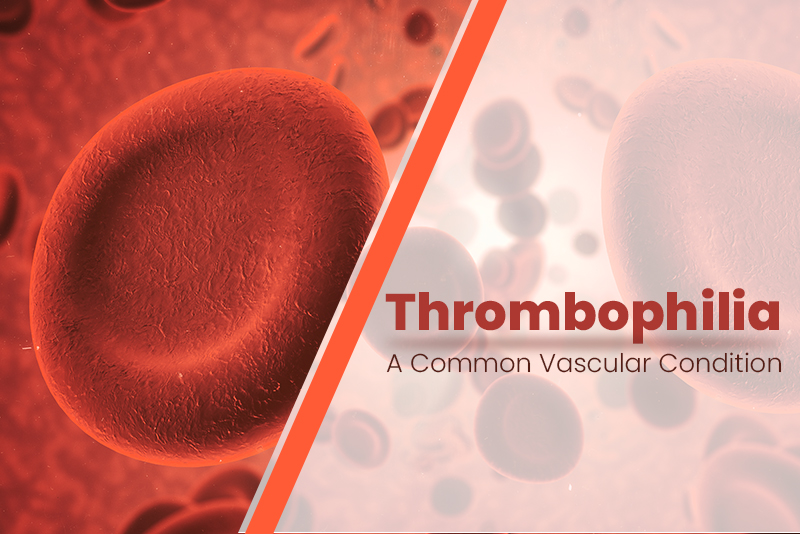A common vascular disorder, Thrombophilia is a condition where the blood in the veins and arteries has an increased tendency to form clots. The condition refers to a hypercoagulable state – an abnormality in blood coagulation that increases the risk of clot formation. Thrombophilia can be an inherited (genetic) or acquired tendency to form blood clots in the arteries and veins. In addition to genetic problems, the condition can also occur due to certain other medical conditions such as – liver disease, disseminated intravascular coagulation (DIC), Hepatitis and HIV. If left untreated, it can lead to serious complications such as deep vein thrombosis (DVT), pulmonary embolism, or stroke. Proper documentation and coding of thrombophilia are essential not only for accurate diagnosis and treatment but also for smooth vascular medical billing and coding. In this post, we break down how to code thrombophilia using the correct medical codes while also outlining the key components of medical billing for thrombophilia.
Need help navigating thrombophilia billing codes?
Contact our medical coding company today for accurate and compliant claim submissions!
ICD-10 Codes for Thrombophilia
The most commonly used ICD-10 codes for thrombophilia include –
- D68.5 Primary thrombophilia
- D68.51 Activated protein C resistance
- D68.52 Prothrombin gene mutation
- D68.59 Other primary thrombophilia
- D68.6 Other thrombophilia
- D68.61 Antiphospholipid syndrome
- D68.62 Lupus anticoagulant syndrome
- D68.69 Other thrombophilia
- D68.8 Other specified coagulation defects
- D68.9 Coagulation defect, unspecified
Accurate documentation of the type (inherited vs. acquired) is crucial for precise coding and reimbursement.
CPT Codes for Thrombophilia Evaluation
Coagulation and Clotting Function Tests
- 85610 Prothrombin time (PT)
- 85730 Activated partial thromboplastin time (aPTT)
- 85670 Thrombin time (TT)
Protein and Inhibitor Tests
- 85300 Antithrombin III activity
- 85302 Protein C antigen
- 85303 Protein C functional activity
- 85306 Protein S antigen (free)
- 85305 Protein S, functional activity
Genetic Mutation Tests
- 81241 Factor V (Leiden) mutation analysis
- 81240 Prothrombin G20210A mutation analysis
- 81291 MTHFR (C677T, A1298C) gene analysis (if applicable)
Antiphospholipid Syndrome Testing
- 85613 Lupus anticoagulant evaluation (e.g., DRVVT)
- 86146 Beta-2 glycoprotein 1 antibody (IgG or IgM)
- 86147 Cardiolipin antibody (IgG or IgM)
Medical Billing Guidelines for Thrombophilia
When it comes to medical billing for thrombophilia, healthcare providers must ensure that the diagnosis is supported by medical necessity and relevant documentation. This includes detailed patient history and symptomology, lab test results (e.g. genetic testing, coagulation profiles), imaging study results and treatment plans (e.g. anticoagulants, monitoring schedules). Proper billing ensures the healthcare provider receives appropriate reimbursement and minimizes the risk of claim denials.
Medical billing guidelines for thrombophilia diagnosis:
- Document Thoroughly: Always specify whether the thrombophilia is primary (inherited) or secondary (acquired), and include relevant lab findings.
- Use the Specific ICD-10 Code: Avoid using vague or unspecified codes. Refer to the patient’s exact condition and choose the most accurate ICD-10 code from the D68.5x series.
- Attach Relevant CPT Codes: Include the appropriate CPT codes for diagnostic tests, such as: Coagulation testing (e.g. 85610, 85730) and Genetic tests (e.g. 81240 for Factor V Leiden).
- Include Modifier Codes When Required: Modifiers help provide additional context for services rendered. For example, modifier -25 indicates that a significant, separately identifiable evaluation and management service was performed.
- Check Payer-specific Rules: Keep up with payer-specific rules and regulations for billing. Always verify billing and coding guidelines with insurance payers to account for policy variations and pre-authorization requirements. Since these guidelines change frequently, staying informed is essential to maintain compliance and avoid billing errors.
Correct billing and coding thrombophilia is vital for both patient care and administrative efficiency. As a common vascular disorder, it requires close adherence to vascular medical billing and coding protocols, accurate usage of the medical codes, and compliance with medical billing guidelines for thrombophilia diagnosis. By aligning your coding and documentation practices with these standards, you can avoid claim denials and ensure timely reimbursement.
Simplify thrombophilia coding
Schedule a consultation with our billing specialists to optimize your vascular coding accuracy!




